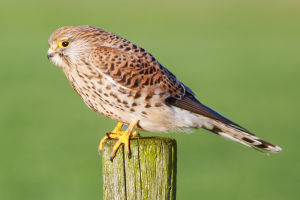In the vastness of nature, there is a unique and magnificent creature whose beauty and mystery are breathtaking. That is the blood pheasant, a charming bird. The blood pheasant is a rare species that is mainly found in the mountains and forests of Asia.
It is famous all over the world for its unique appearance and impressive feathers. The male blood pheasant is larger in size and colorful all over, just like a work of art. Its head is covered with a golden crown feather, as noble as a crown.
The neck is bright red as if a flame is burning. The feathers on the back and wings show a variety of brilliant colors such as green, blue, and purple, making it like a painting. The blood pheasant's tail is extremely spectacular, composed of long and slender feathers, forming a beautiful flower shape, and an emerald-like blue feather is embedded in the center of the tail, emitting a charming light.
In addition to their striking appearance, blood pheasants are also known for their distinctive calls. The call of the male blood pheasant is melodious and long, with a magnetic sense of rhythm, just like the symphony of nature. When this beautiful song echoes in the forest, it is refreshing, as if entering a completely different world.
Blood pheasants also have their own uniqueness in their living habits. They are usually active in dense forests and jungles among the forests and are good at hiding themselves. This makes them mysterious and elusive to people.
They feed on fruits, insects, and nuts and are good at foraging on the ground. The blood pheasant has excellent flying ability and can freely shuttle between trees, showing a dexterous and graceful figure.
Regrettably, however, due to habitat loss and human destruction, blood pheasant populations have declined dramatically over the past few decades.
Now, they are listed as endangered species and need our protection and care. We should take active steps to protect their habitat, prevent illegal capture and poaching, to ensure that the blood pheasant can continue to bloom its unique beauty on the earth.
The blood pheasant is a masterpiece of nature and a treasure of biodiversity. Their beauty and mystery are beyond any description, and their magnificence can only be truly appreciated by seeing them with your own eyes.
Let us work together to protect these beautiful and precious creatures so that they can continue to dance their feathers and display nature's most beautiful colors in the years to come.
To protect endangered blood pheasant species, we can do the following:
1. Habitat protection: blood pheasants mainly inhabit mountainous and forest areas, and we should be committed to protecting and restoring their habitat. This includes prohibiting illegal deforestation and habitat destruction and ensuring the integrity and diversity of forests.
2. Establishment of nature reserves: The establishment of nature reserves for blood pheasants is an effective means to protect this species. These protected areas, limit the impact of human activities, provide a safe breeding and habitat environment, and provide a relatively safe habitat for the blood pheasant.
3. Strengthen legal protection: Formulate and implement laws and regulations to clearly prohibit the killing, trafficking, and illegal trading of blood pheasants. Increase the crackdown on illegal hunting and poaching, and impose severe penalties on offenders, so as to reduce illegal hunting and trading activities.
4. Raise public awareness: Raise public awareness and attention to blood pheasant through education and publicity activities. Promote the unique beauty and ecological value of blood pheasants, let more people know about their endangered status, and stimulate public awareness of protection.
5. Scientific research and monitoring: Carry out scientific research to understand the ecological habits, reproductive behavior, and habitat requirements of the blood pheasant, and provide a scientific basis for formulating effective protection strategies. At the same time, establish a monitoring mechanism to regularly investigate the population and distribution of blood pheasants, and keep abreast of their status.
6. International cooperation: The protection of the blood pheasant is a global task that requires international cooperation and consensus. Countries can strengthen information sharing, technical cooperation, and exchange of conservation experience, jointly formulate conservation plans and measures and work together to protect this precious species.
To sum up, the protection of blood pheasants requires multi-party cooperation and continuous efforts. Only through the joint actions of the whole society and strengthening the implementation of protection measures, can we ensure the effective protection of blood pheasants and allow them to continue to show their unique beauty and charm on the earth.


